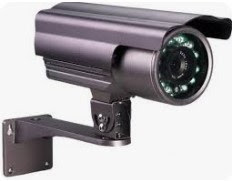Installing a Floodlight Wi-Fi CCTV camera involves several steps to ensure proper functionality and security. Here's a general guide to help you through the process:
1. Choose the Right Location: Select a location for your
floodlight WiFi CCTV camera that provides a wide view of the area you want to
monitor. Make sure it's within range of your Wi-Fi network.
2. Mounting: Use the mounting bracket provided
with the camera to attach it securely to a wall or another surface. Ensure it's
at the desired height and angle for optimal coverage.
3. Power Source: Most floodlight Wi-Fi CCTV cameras
require a power source. Ensure there's an electrical outlet nearby or be
prepared to install one if needed.
4. Wi-Fi Connection: Follow the manufacturer's instructions
to connect the camera to your Wi-Fi network. This usually involves downloading
an app, scanning a QR code, and following on-screen instructions.
5. Camera Setup: Once connected to Wi-Fi, follow the
instructions in the app to set up your camera. This may include adjusting
settings such as motion detection sensitivity, recording preferences, and
notification alerts.
6. Testing: After setup, test the camera to
ensure it's working correctly. Verify that live streaming, recording, and
motion detection are functioning as expected.
7. Secure Installation: Make sure all cables are properly
secured and hidden to prevent tampering or damage. Additionally, ensure the
camera's mounting hardware is securely fastened to prevent theft or
unauthorized removal.
8. Adjustments: Periodically check and adjust the
camera's position and settings as needed to maintain optimal performance.
9. Additional Considerations: Depending on your specific needs,
you may want to consider additional features such as cloud storage for recorded
footage, integration with smart home devices, or enhanced security measures
such as two-factor authentication.
10. Legal Considerations: Familiarize yourself with any local
regulations or laws regarding CCTV camera installation and usage, including
privacy considerations and data protection laws.
It's essential to carefully follow the
manufacturer's instructions throughout the installation process to ensure the
best results and to avoid damaging the camera or voiding the warranty. If
you're unsure about any aspect of the installation, consider consulting a
professional installer or electrician.








0 Comments